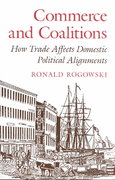32) Which of the following is NOT a component of the demand for money? a. Investment Demand a b. Speculative Demand C. Transaction Demand d. Precautionary Demand 33) Given an upward sloping AS curve, which of the following is most likely to occur if the Fed pursues restrictive monetary policy? a. Equilibrium price level and output will both decrease The equilibrium price level and output with both increase d. c. Equilibrium output will decrease and the price level will increase Equilibrium price level will decrease and output will increase 34) In the Keynesian model, the effectiveness of monetary policy depends on a. The Fed's ability to influence the money supply b. The sensitivity of interest rates to changes in the money supply c. The sensitivity of investment spending to changes in interest rates d. All of the above 35) Which of the following is a series of events used by Keynesians to describe steps by which monetary restraint works in the short-run? Decrease in M, increase in interest rates, decrease in investment b. Increase in M, increase in interest rates, decrease in investment c. Decrease in interest rate, increase in M, decrease in investment d. Increase in M, decrease in investment, decrease in interest rates 36) Monetary stimulus will fail if . The investment demand is elastic b. People are willing to hold onto cash at low rates of interest C . Expectations of a boom cause the investment demand curve to shift to the right d. All of the above 37) When the money market is in equilibrium in the liquidity trap a. Investment spending falls to zero b. The demand for money is perfectly insensitive to interest rates C . An increase in the money supply does not affect interest rates d. There is no speculative demand for money 38) Which of the following is the monetarist assumption on the drawback of fiscal policy? a. Unstable velocity of money The liquidity trap C . Crowding out d. Inelastic demand 39) Monetarists argue that the velocity of money a. Increases as much as total spending falls so that MV remains constant b. Is constant c. Is reduced when fiscal policy puts idle money balances to work d. Increases when there is a recession because people accumulate money







